Return of Hong Kong, 20 Years Later
‘One Country, Two Systems’ No More
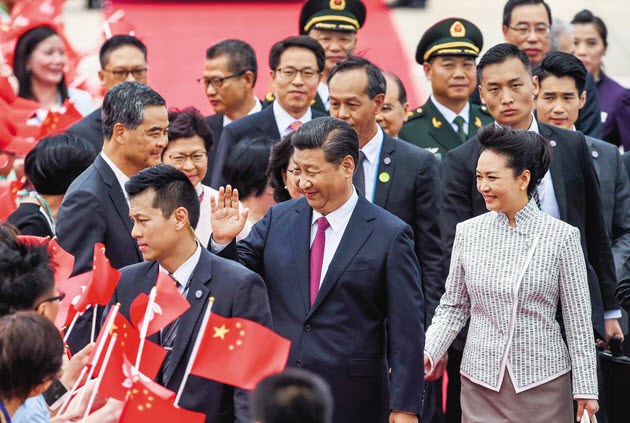
Source:Getty Images
Twenty years after Britain’s handover of Hong Kong to China, Hong Kongers are anxious over Beijing’s plans to completely integrate it with the Pearl River Delta. How will Xi Jinping deal with this challenge to his “China Dream”?
Views
‘One Country, Two Systems’ No More
By Amber LinFrom CommonWealth Magazine (vol. 626 )
When Hong Kong’s government hosted a banquet welcoming Chinese President Xi Jinping on the eve of the 20th anniversary of Hong Kong’s handover to China, it was a festive affair of Hong Kong’s elite. As Xi stood to speak, they were full of anticipation, wondering what kind of “gifts” he would shower on their city.
“The practice of ‘one country, two systems’ has given Hong Kong an institutional advantage, enabling it both to share in the mainland’s vast market and development opportunities and serve as a testing ground for the country’s new opening-up initiatives,” Xi said.
“By building on and leveraging these strengths, Hong Kong will surely be able to keep and attract investment and talents, seize opportunities presented by economic globalization and regional cooperation to promote innovative local business start-ups, and develop new growth drivers.”
Among the opportunities Xi cited were the Shanghai-Hong Kong Stock Connect and Shenzhen-Hong Kong Stock Connect launched in Hong Kong to connect Hong Kong’s market to those in the two Chinese cities, as well as the “Bond Connect,” which opened in Hong Kong on July 2 and gave foreign fund managers direct access to Chinese bonds without having to set up an account in China.
Xi also stressed the importance of having confidence in three areas: “in ourselves,” “in Hong Kong,” and “in our country.”
It was Xi’s first visit to Hong Kong since he took power as head of China’s government in 2013. Aside from the protests being held by democracy activists outside the venue, people in Hong Kong had another “gift” of their own waiting for him.
On the eve of the 20th anniversary of Hong Kong’s handover, a University of Hong Kong poll found that 40 percent of respondents aged 30 and above identified themselves as “Chinese,” but only 3 percent of respondents aged 18 to 29 felt the same way, the lowest since 1997. In addition, only 9 percent more respondents had confidence in Hong Kong’s future than those who didn’t (49.4 percent expressing confidence vs. 40.4 percent who were not confident), compared to a confidence “surplus” of 60-77 percentage points 20 years ago.
“Sovereignty has returned to China, but people’s hearts and minds have not followed,” says political commentator Lau Sai-leung in interpreting the survey’s results.
Hong Kong’s New ‘One Country’ Reality
Even if Hong Kongers’ identification with China and confidence in the future are deteriorating, China’s total economic and political influence over Hong Kong has become an irreversible fact.
“Maintaining ‘two systems’ will require major costs,” says Lau, who served as an adviser to the special administrative region government for seven years and had to deal with Beijing on countless occasions. Looking back, the government of Tung Chee-hwa during the Jiang Zemin era had the most autonomy and most embodied the “one country, two systems” formula under which China pledged to govern Hong Kong, Lau says.
Since the 500,000-person march on July 1, 2003, however, Beijing has gradually tightened its grip on the region. The Donald Tsang government, in power from 2005 to 2012 during the reign of Hu Jintao in China, was something of an “expedient” choice by Beijing, but the transition has been consolidated under Xi Jinping, with Hong Kong’s “one country, two systems” framework now entering the “one country” era.
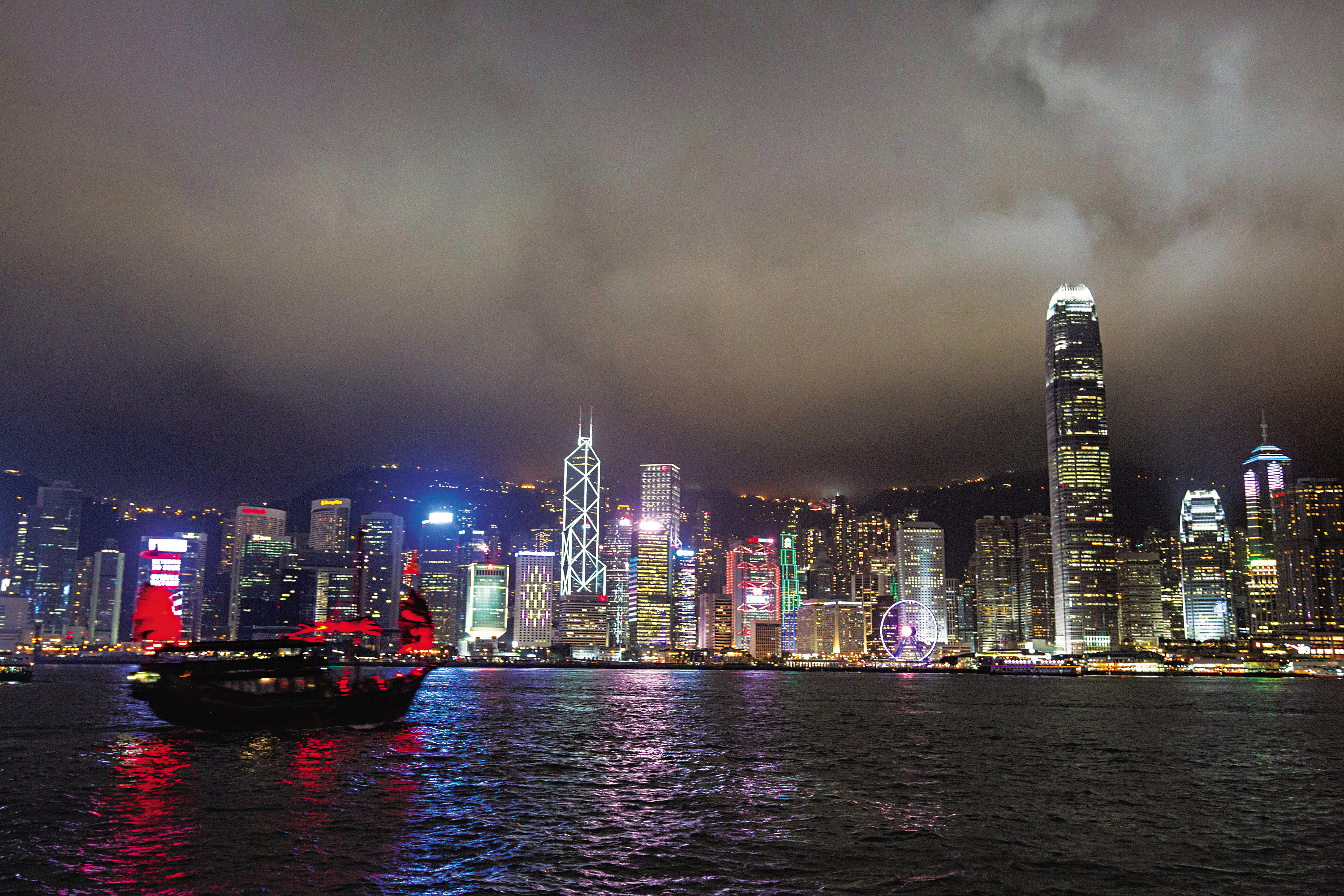
In recent years, the “Liaison Office of the Central People’s Government in Hong Kong” (LOCPG) – located in the city’s Western (Sai Wan) District – has gotten into the habit of welcoming and seeing off officials from Hong Kong’s government headquarters. Leung Chun-ying paid the office a visit the day after he was elected Hong Kong’s chief executive five years ago, and Carrie Lam paid the office a courtesy call three days after being anointed the new chief executive in late March. The trend has given rise to a popular phrase: “Sai Wan runs Hong Kong.”
One former Information Services Department official revealed that Hong Kong’s government communicates frequently with the LOCPG and the Hong Kong and Macao Affairs Office under China’s State Council, signaling the erosion of the “two systems” framework. That was clear during Hong Kong’s chief executive election in March, when the more popular John Tsang could not defeat Lam – China’s preferred candidate – among the 1,194-member Beijing-dominated election committee.
The same is true economically.
Twenty years ago, the formal handover of sovereignty took place at The Hong Kong Convention and Exhibition Centre in Wan Chai. Today, the surrounding area symbolizes China’s massive economic influence, as the headquarter buildings of Beijing Enterprises Holdings, China Resources, and Sinopec located along nearby Harbour Rd. dominate the skyline at night. Many Chinese-invested enterprises have first developed a foothold in the Wan Chai area and then gradually migrated into Central with the help of China’s deep pockets.
Hong Kong’s new face has gradually gained clarity. For much of the period since the 1950s, China’s influence on Hong Kong was largely under the radar, from Xinhua News Agency’s office near Hong Kong’s Happy Valley Racecourse and the rise of “Little Fujian” and the China Resources Group in North Point to leftist, patriotic schools around Hong Kong and rumors of underground political parties. But 20 years after the return of sovereignty, China has become a ubiquitous presence in Hong Kong’s landscape.
Three Major Integration Plans
During the 160 years the British colonized Hong Kong, their main goal was to use Hong Kong to make a fortune from trade, but China had far greater ambitions. The core logic behind China’s grip on the region has always been “one country,” embodying the complete geographic, economic and human integration of China and Hong Kong. In the past two decades, that vision has largely been realized.
Geographic Integration
On the water, the world’s longest sea bridge connecting Hong Kong, Zhuhai and Macau is set to open by the end of the year after eight years of construction. Once the mega-bridge opens to traffic, travel time between Zhuhai and Hong Kong will be cut to half an hour by car, down from the current one hour by water and three hours or more by road.
Though plagued by several corruption scandals and accidents, the 100 billion renminbi project spanning 55 kilometers is like a string tightly binding Hong Kong and the Pearl River Delta together.
On land, the Hong Kong section of the Guangzhou-Shenzhen-Hong Kong high-speed rail line has been completed and is expected to begin service next year. That will bring Hong Kong into China’s dense high-speed rail network and open high-speed rail access to any major city on the mainland, enabling much larger volumes of people to come and go.
In effect, the high-speed rail line and the Hong Kong-Zhuhai-Macau Bridge have eliminated any geographical barriers between Hong Kong and the Pearl River Delta.
Economic Integration
In its 13th five-year plan in 2015, Beijing included a separate chapter on Hong Kong and Macau for the first time, positioning Hong Kong as playing a special role in China’s market reforms and infrastructure modernization. Then, at a National People’s Congress meeting in March 2017, Premier Li Keqiang proposed a “Guangdong-Hong Kong-Macau Greater Bay Area Plan” to fuse the three regions even closer together.
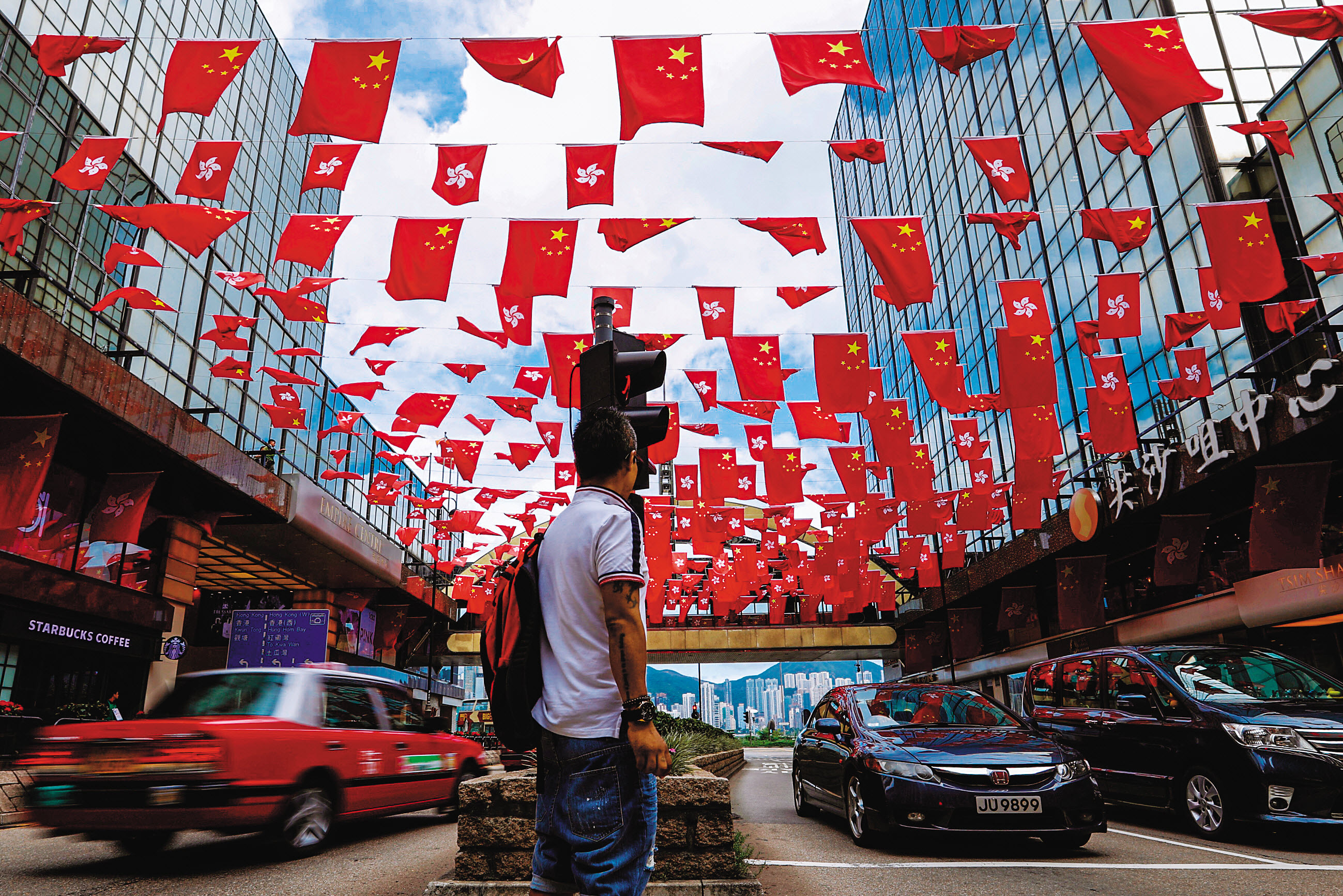 Hong Kong is draped in both Chinese and Hong Special Administrative Region flags, symbolizing the new reality it faces 20 years after the handover of its sovereignty.
Hong Kong is draped in both Chinese and Hong Special Administrative Region flags, symbolizing the new reality it faces 20 years after the handover of its sovereignty.
The plan envisions merging Hong Kong with Guangzhou, Shenzhen, Zhuhai, Foshan, Zhongshan, Dongguan, Zhaoqing, Huizhou, Jiangmen and Macau in a “one-hour living circle” to create the world’s fourth major bay area after New York, Tokyo and Los Angeles and encourage further geographic, cultural and economic integration.
Economically, China and Hong Kong are already interdependent. Gordon Sun, the director of the Taiwan Institute of Economic Research’s Economic Forecasting Center, notes that companies in Hong Kong’s financial services, logistics and property sectors topped the profit margin rankings in CommonWealth Magazine’s 2017 Greater China Top 1000 Survey. An important reason for that, he says, is Hong Kong’s role in connecting China to the world.
Human Integration
When top Chinese students study in Hong Kong, they more easily come in contact with world-class companies, technology and talent, leading many of them to start their own businesses in the Pearl River Delta area after finishing their studies. One of the early examples of this model was Frank Wang, who founded drone maker DJI (Da-Jiang Innovations Science and Technology) in Shenzhen after studying electronic and computer engineering at Hong Kong University of Science and Technology. This use of Hong Kong’s strengths in combination with Pearl River Delta resources has cemented relations between the two regions.
So Close, Yet Drifting Apart
Yet for all of the attention Hong Kong is getting from China’s central government, and its argument that “if the mainland does well, so will Hong Kong,” people there seem less than impressed. The question is why.
“The Greater Bay Area Plan is giving a first-class international city the same status as second and third tier Chinese cities. What does that imply?” says a veteran Hong Kong media worker, echoing the real anxiety of many Hong Kongers.
What’s most concerning to them is that the former British territory’s distinct status is being changed, from that of a free, world port into simply one of a group of southern Chinese cities.
James J. Wang, an associate professor in the University of Hong Kong’s Department of Geography and an expert on regional economies, says many people in Hong Kong believe the region has been marginalized since the handover of sovereignty. But he argues that Hong Kong has always been on China’s geographical periphery, “so rather than saying Hong Kong is in decline, it would be better to say that it is returning to its normal state.”
During the Cold War in the 1950s, when China was isolated by Western democracies and its relations with Russia were tense, Hong Kong was the only gateway to the People’s Republic. Benefiting from those historical circumstances, Hong Kong became the world’s biggest port and ocean shipping center.
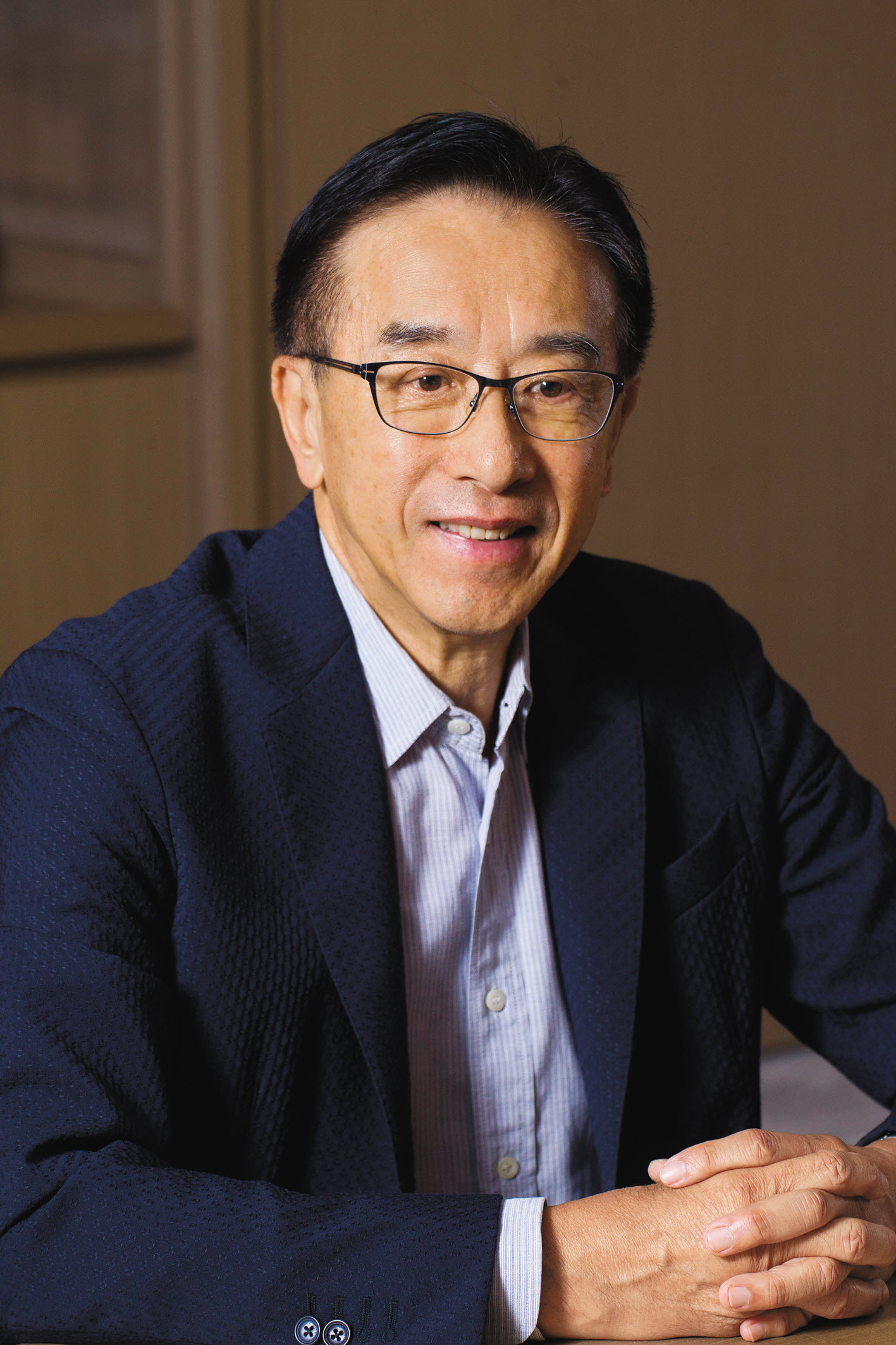 Former Liberal Party chairman James Tien worries that Hong Kong is slowly losing its growth momentum.
Former Liberal Party chairman James Tien worries that Hong Kong is slowly losing its growth momentum.
When Beijing embarked on the road to reform and opening-up in 1978, Hong Kong played an integral role, in essence leading China’s economic rise. Its manufacturers relocated to China en masse in the 1980s, bringing with them management talent, operating models and financing platforms that eventually led to Shenzhen’s boom.
In the 1990s, many foreign investors pulled out of China because of the Tiananmen Square Massacre in 1989, but ethnic Chinese businessmen in Hong Kong, Taiwan and Southeast Asia moved in, with Hong Kong investors the most active by far.
After China joined the World Trade Organization in 2001, it made even greater use of Hong Kong to raise funds and reach out into the world.
But as China’s economy grew more open, Hong Kong’s role as an intermediary gradually eroded, to the point where the once biggest port in the world is now only the fourth biggest port in China and its economy’s share of Chinese GDP has fallen from one-fifth 20 years ago to only 3 percent today.
With Beijing now controlling the general narrative, mainstream opinion in Hong Kong thoroughly believes that the little island could not survive without water from Shenzhen’s Dong River or food imported from China by the China Resources Group – in other words that Hong Kong’s prosperity comes from Beijing.
“The concept of ‘long-term planning and full utilization’ was the tone Chou Enlai advised Mao Zedong to set for Hong Kong since the PRC was established in 1949 and has been the perpetual theme of China-Hong Kong relations,” political commentator Lau says. Looking at Hong Kong’s fate through the eyes of history, Lau believes that the most deeply ingrained perception of people in Hong Kong is the “feeling of being used.”
Where Is Hong Kong’s ‘Next Big Thing’?
But in fact, China needs Hong Kong. No matter how hard it has tried to replicate several Hong Kongs inside its territory, Beijing still has not been able to completely replace it.
“Hong Kong is still extremely important. Eighty percent of China’s foreign trade is transacted in Hong Kong. It has always played the role of a middleman in helping China trade and it can help elevate the standards of products the mainland ships abroad,” the University of Hong Kong’s Wang argues.
To a Hong Kong that has always faced out toward world markets in the past, the trend toward regional economic integration has embedded it into China’s economy, giving it a built-in advantage in a world that is desperate to make inroads into the Chinese market. Wang believes that from the perspective of China’s development, a regional development strategy that has Hong Kong strengthen its position as an international financial center while complementing other cities in the Pearl River Delta makes perfect sense.
But from Hong Kong’s perspective, having an economy dependent on China’s development does not come without costs.
In 2015, Hong Kong’s financial services sector employed about 240,000 people, or 7 percent of the region’s 3.82 million people with jobs, yet accounted for 18 percent of its GDP. Also, services account for about 90 percent of Hong Kong’s economy, making it too one-dimensional, a problem not lost on David Chung Wai-keung, the deputy chief of the Innovation and Technology Bureau.
In the 1960s and 1970s, manufacturing made up around 30 percent of Hong Kong’s GDP, but that has fallen to only about 1.2 percent today, Chung says, arguing that Hong Kong must consider the idea of “re-industrialization.”
James Tien, the chairman of property development group Manhattan Holdings who has also headed Hong Kong’s Liberal Party and been a member of the Legislative Council, also feels more must be done to help Hong Kong adapt to the changing times.
He argues that earnings from Hong Kong’s transshipment, property, logistics and professional service sectors were the cornerstone of its past success, but today, while most of Hong Kong’s financiers can still earn high returns in the property market, they do not know how to invest in innovative technologies. That combined with Hong Kong’s long-term neglect of manufacturing has robbed the former British territory of any new growth momentum of its own, he says.
Tien, seen as a political moderate with pro-establishment leanings, still believes that “the idea of ‘if the mainland economy is doing well, so will Hong Kong’ will undoubtedly be true in the future.”
But he has also seen “Chinese companies completely take hold of Hong Kong’s main economic lifelines, sending property prices soaring through speculation and controlling people’s livelihoods. It will be even harder for people in Hong Kong if they want to achieve the political goal of popular elections by universal suffrage,” he says.
Hong Kong’s Strengths = China’s Needs
As Tien’s argument suggests, politics remains at the heart of problems between China and Hong Kong.
“Based on the development approaches of normal countries, the integration of China and Hong Kong is a reasonable idea. The difference is that Beijing is a totalitarian government, which is why the situation is sensitive,” observes Chinese journalist Jia Jia who has started his own venture in Shenzhen after working in Hong Kong for a few years.
He notes that people cross the border between Shenzhen and Hong Kong 500,000 to 600,000 times every day and plans are afoot to increase the number of ports connecting the two sides to 10. From a simply economic perspective, the Greater Bay Area, the Hong Kong-Zhuhai-Macau Bridge and the Hong Kong-Shenzhen Express Rail Link are all things Hong Kong actually needs Jia says, and he sees the opposition of many Hong Kongers as overly politicized.
Hong Kong’s business sector, however, is nothing if not pragmatic.
Campell Group founder Eddy Li, who got his start in business in the 1980s as a watchmaker and who has experienced China’s economic liberalization process from the eyes of a small-business owner, sees Hong Kong as having had three different roles vis-à-vis China over the past 30 years. In the first 10 years, it played a leadership role in China’s economy, and the next 10 years were a highly cooperative period of “you have me and I have you.” Today, he says, people in Hong Kong need to adjust their mindsets to the idea of “Hong Kong’s strengths meeting China’s needs.”
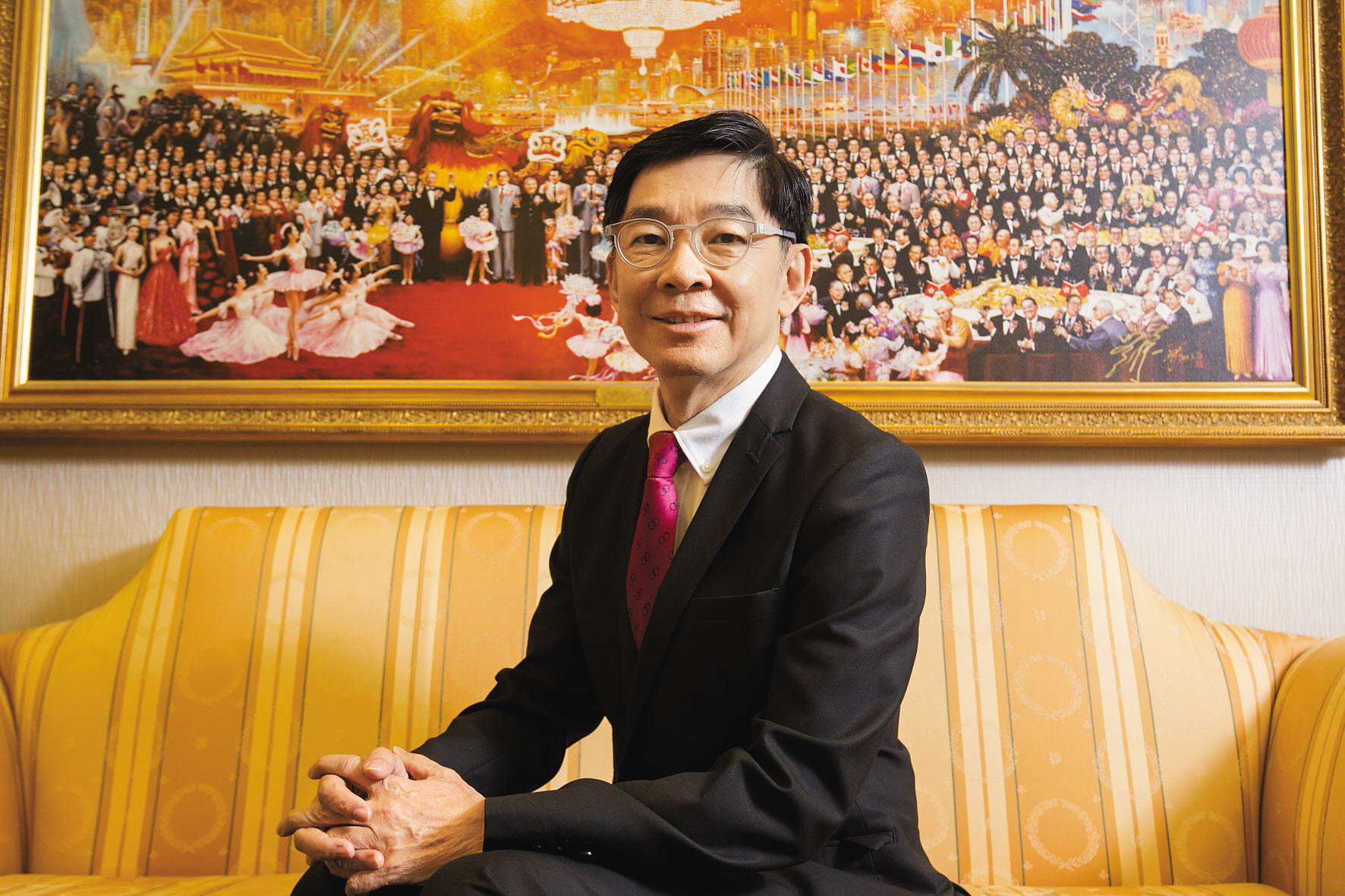 Campell Group founder Eddy Li believes that if Hong Kong follows China’s economic direction, it will continue to have big opportunities. Behind him is the painting “Festival Day,” marking Hong Kong’s return to China.
Campell Group founder Eddy Li believes that if Hong Kong follows China’s economic direction, it will continue to have big opportunities. Behind him is the painting “Festival Day,” marking Hong Kong’s return to China.
In 2013, the Leung Chun-ying government advocated Hong Kong serving as a “super-connector” in China’s “One Belt, One Road” initiative, the idea being to give Hong Kong something of a say in Xi Jinping’s pursuit of the China Dream. As a result, the “Greater Bay Area” and “One Belt, One Road” have become buzzwords of the government and business community in Hong Kong.
“How would it be possible for Hong Kong to be without China today? How would we eat or drink water? Without China, how would we provide services? It’s completely unthinkable,” says Li, who is also president of the Chinese Manufacturers’ Association of Hong Kong, with a reproduction of the painting “Festival Day” by Chinese painter Liu Yuyi hanging behind him.
The original of this famous work is now worth HK$23 million (about NT$90 million; US$2.95 million). Painted to mark Hong Kong’s return to Chinese sovereignty, “Festival Day” showed prominent figures from China, Hong Kong and Macau gathered at a banquet to symbolize the great future ahead for Hong Kong after returning to the embrace of the motherland.
“Don’t always feel that Hong Kong is in bad shape,” implores Eddy Li. “There is competition, but we’re not scared. The mainland is progressing, and as long as Hong Kong aligns itself with China’s direction, there will be plenty of opportunities in the future.”
On the “Festival Day” that occurred 20 years ago, Hong Kong’s fate changed without it having any say in the matter, being handed over from a colony under the British queen to a rising China. In today’s Xi Jinping era dominated by the “China Dream,” Hong Kong faces another new reality – leaving “one country, two systems” behind to be governed as simply part of “one country” – and how it copes will determine its future.
Translated from the Chinese by Luke Sabatier







